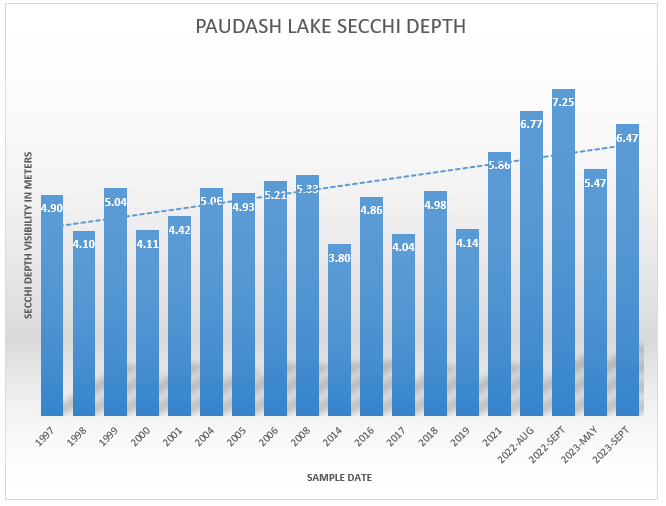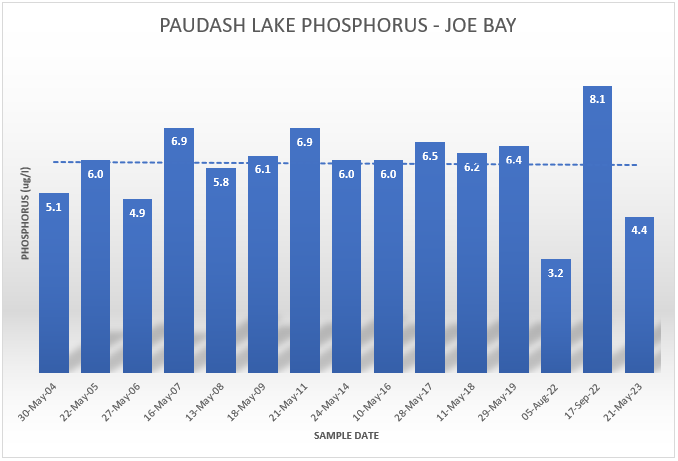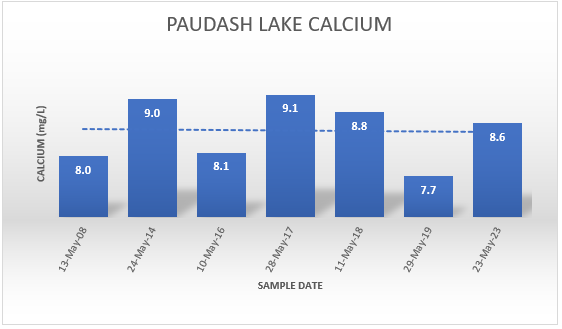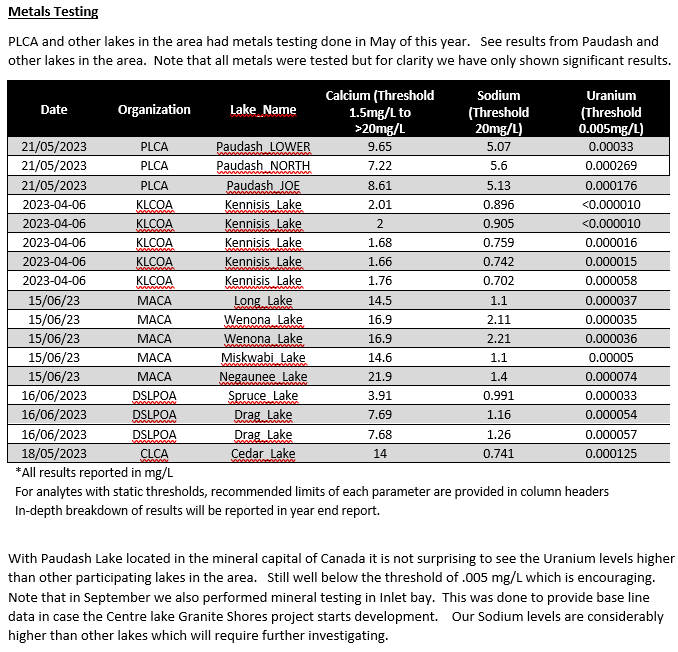Lake Stewards Report – Sept 2023
Highlights
Since 1997 – Secchi Disk (Water Clarity). On average, the water clarity has increased since 1997 with Sept testing confirming this trend. The Secchi disk process is somewhat subjective so long term trends are needed to make assessments. We will continue to monitor this data to ensure this is not a signifier of some other issue.
Since 2004 – Phosphorus (Weeds, Algae blooms). On average, the phosphorus levels have remained reasonably consistent since 2004. Sept 2022 testing was concerning @8.1 ug/l but testing done this May 2023 was much lower at @4.41 ug/l . September testing data will be received in the next few months, so we see how this trends. Phosphorus is always a concern as it is a direct result of Septic issues, phosphates from detergent, fertilizers, and the elimination of shoreline natural buffer zone etc.
Since 2008 – Calcium (needed for living organisms). On average, calcium levels have remained reasonably consistent since 2008. 2019 levels were the lowest level @ 7.7 mg/l since 2008 but May 2023 results were back up to average levels @ 8.6 mg/l. Possibly, the addition of clean wood ash has helped to increase the Calcium levels. Please continue to be sprinkling wood ash from clean burning fireplaces to areas around your shoreline.
Since 2001 – Dissolved Oxygen (Lake Health Indicator). On average, the dissolved oxygen has remained roughly the same since 2001. Both North Bay and Joe Bay did have lower September results. This was our first use with a newly purchased meter so it could be a calibration issue. We are in the process of checking our meter and sensor to ensure the data we have is accurate.
Since 2016 – Chloride (Detrimental for lake ecosystem). We believe the chloride is Increasing and likely caused from road salt. We are awaiting 2021 Lake Partner data to confirm this trend.
Since 2023 – Total Metals. New this year is metals testing in the Lake. 40 different types of metals were tested with comparative data from 9 other lakes. All results were well under the threshold limits.
Paudash Lake Testing Programs
Your PLCA has been testing Paudash lake since 1997. We have participated in lake testing through the Lake Partner Program (https://foca.on.ca/lake-partner-program/) and starting is 2022, we our participated in the Haliburton Water Quality Pilot Program. This pilot program monitors 9 Haliburton Lakes including ours. Each lake will be testing 3x/year and testing is much more extensive with 14 parameters measured. Cost of the testing is covered by lake associations. Below are the parameters measured.
Why do we test?
To see data trends and comparisons to other lakes.
As an example, presented at the Lake Stewards meeting in Spring of 2023 an area lake saw a spike in Phosphorus. Further testing discovered a lakeside greenhouse with fertilizer release problems as well as a full time rental cottage with a failed septic. The continuous monitoring of the lake found the issues well before weeds, algae blooms etc. would have occured.
Future Health of the Lake
We will see increasing stress from climate change and the loss of shoreline buffer zone, septic’s etc. We are likely to see Algae blooms on Paudash in the future. Even lakes that are not stressed from development are at risk. Scientist recently found a northern lake with an algae bloom that was unexplainable. Discovered that the weather pattern changes had produced lower winds on the lake and allowed surface temperatures to increase, resulting in an algae bloom.
What can you do to maintain lake health?
Maintain your septic.
Increase or maintain your shoreline buffer zone.
Buy products with no Phosphates.
Sprinkle Wood Ash from clean burn fireplaces in forest around cottage.






